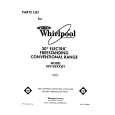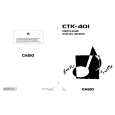|
|
|
Productos
|
|
Información
|
|
Destacado
|
|
|
 |
|
|
No hay comentarios de productos.
Command Separator
A colon (:) always separates one command from the next lower level command as shown below:
ROUTe:SCAN:MODE?
Colons separate the root command from the second level command (ROUTe:SCAN) and the second level from the third level (SCAN:MODE?).
Abbreviated Commands
The command syntax shows most commands as a mixture of upper and lower case letters. The upper case letters indicate the abbreviated spelling for the command. For shorter program lines, send the abbreviated form. For better program readability, you may send the entire command. The instrument will accept either the abbreviated form or the entire command. For example, if the command syntax shows MEASure, then MEAS and MEASURE are both acceptable forms. Other forms of MEASure, such as MEASU or MEASUR will generate an error. You may use upper or lower case letters. Therefore, MEASURE, measure, and MeAsUrE are all acceptable.
Implied Commands
Implied commands are those which appear in square brackets ([ ]) in the command syntax. (Note that the brackets are not part of the command and are not sent to the instrument.) Suppose you send a second level command but do not send the preceding implied command. In this case, the instrument assumes you intend to use the implied command and it responds as if you had sent it. Examine the SOURce subsystem shown below:
[SOURce:] PULSe :COUNt <count> :COUNt? [<MIN | MAX>] :PERiod <period> :PERiod? [<MIN | MAX>]
The root command [SOURce:] is an implied command. To set the instrument�s pulse count to 25, you can send either of the following command statements:
SOUR:PULS:COUN 25
or
PULS:COUN 25
48 HP E1368A/69A/70A Command Reference
Chapter 4
|
|
 |
> |
|



